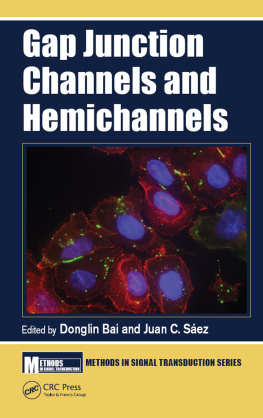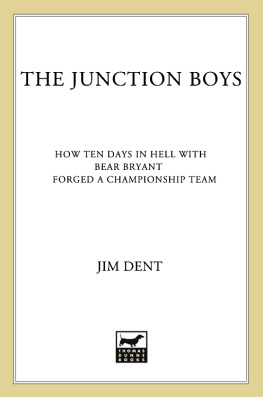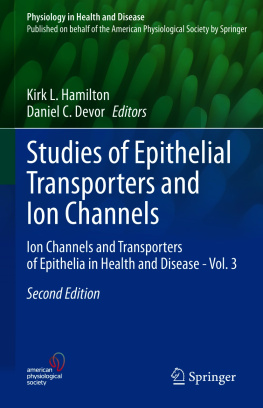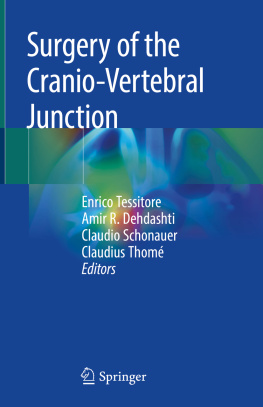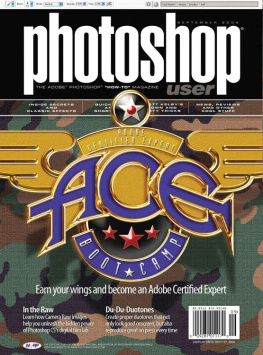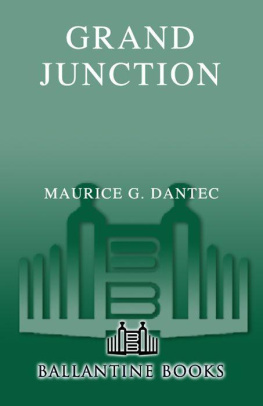Bai Donglin - Gap Junction Channels and Hemichannels
Here you can read online Bai Donglin - Gap Junction Channels and Hemichannels full text of the book (entire story) in english for free. Download pdf and epub, get meaning, cover and reviews about this ebook. year: 2016, publisher: CRC Press, genre: Home and family. Description of the work, (preface) as well as reviews are available. Best literature library LitArk.com created for fans of good reading and offers a wide selection of genres:
Romance novel
Science fiction
Adventure
Detective
Science
History
Home and family
Prose
Art
Politics
Computer
Non-fiction
Religion
Business
Children
Humor
Choose a favorite category and find really read worthwhile books. Enjoy immersion in the world of imagination, feel the emotions of the characters or learn something new for yourself, make an fascinating discovery.
- Book:Gap Junction Channels and Hemichannels
- Author:
- Publisher:CRC Press
- Genre:
- Year:2016
- Rating:4 / 5
- Favourites:Add to favourites
- Your mark:
- 80
- 1
- 2
- 3
- 4
- 5
Gap Junction Channels and Hemichannels: summary, description and annotation
We offer to read an annotation, description, summary or preface (depends on what the author of the book "Gap Junction Channels and Hemichannels" wrote himself). If you haven't found the necessary information about the book — write in the comments, we will try to find it.
Gap Junction Channels and Hemichannels — read online for free the complete book (whole text) full work
Below is the text of the book, divided by pages. System saving the place of the last page read, allows you to conveniently read the book "Gap Junction Channels and Hemichannels" online for free, without having to search again every time where you left off. Put a bookmark, and you can go to the page where you finished reading at any time.
Font size:
Interval:
Bookmark:

Gap Junction Channels and Hemichannels

Published Titles
Gap Junction Channels and Hemichannels, Donglin Bai and Juan C. Sez
Cyclic Nucleotide Signaling, Xiaodong Cheng
TRP Channels, Michael Xi Zhu
Lipid-Mediated Signaling, Eric J. Murphy and Thad A. Rosenberger
Signaling by Toll-Like Receptors, Gregory W. Konat
Signal Transduction in the Retina, Steven J. Fliesler and Oleg G. Kisselev
Analysis of Growth Factor Signaling in Embryos, Malcolm Whitman and Amy K. Sater
Calcium Signaling, Second Edition, James W. Putney, Jr.
G Protein-Coupled Receptors: Structure, Function, and Ligand Screening, Tatsuya Haga and Shigeki Takeda
G Protein-Coupled Receptors, Tatsuya Haga and Gabriel Berstein
Signaling Through Cell Adhesion Molecules, Jun-Lin Guan
G Proteins: Techniques of Analysis, David R. Manning
Lipid Second Messengers, Suzanne G. Laychock and Ronald P. Rubin
Gap Junction Channels and Hemichannels
Edited by Donglin Bai and Juan C. Sez

MATLAB and Simulink are trademarks of The MathWorks, Inc. and are used with permission. The Math-Works does not warrant the accuracy of the text or exercises in this book. This books use or discussion of MATLAB and Simulink software or related products does not constitute endorsement or sponsorship by The MathWorks of a particular pedagogical approach or particular use of the MATLAB and Simulink software.
CRC Press
Taylor & Francis Group
6000 Broken Sound Parkway NW, Suite 300
Boca Raton, FL 33487-2742
2017 by Taylor & Francis Group, LLC
CRC Press is an imprint of Taylor & Francis Group, an Informa business
No claim to original U.S. Government works
Printed on acid-free paper
Version Date: 20160204
International Standard Book Number-13: 978-1-4987-3862-0 (Hardback)
This book contains information obtained from authentic and highly regarded sources. Reasonable efforts have been made to publish reliable data and information, but the author and publisher cannot assume responsibility for the validity of all materials or the consequences of their use. The authors and publishers have attempted to trace the copyright holders of all material reproduced in this publication and apologize to copyright holders if permission to publish in this form has not been obtained. If any copyright material has not been acknowledged please write and let us know so we may rectify in any future reprint.
Except as permitted under U.S. Copyright Law, no part of this book may be reprinted, reproduced, transmitted, or utilized in any form by any electronic, mechanical, or other means, now known or hereafter invented, including photocopying, microfilming, and recording, or in any information storage or retrieval system, without written permission from the publishers.
For permission to photocopy or use material electronically from this work, please access www.copyright.com (http://www.copyright.com/) or contact the Copyright Clearance Center, Inc. (CCC), 222 Rosewood Drive, Danvers, MA 01923, 978-750-8400. CCC is a not-for-profit organization that provides licenses and registration for a variety of users. For organizations that have been granted a photocopy license by the CCC, a separate system of payment has been arranged.
Trademark Notice: Product or corporate names may be trademarks or registered trademarks, and are used only for identification and explanation without intent to infringe.
Library of Congress Cataloging-in-Publication Data
Names: Bai, Donglin, editor. | Saez, Juan Carlos, editor.
Title: Gap junction channels and hemichannels / edited by Donglin Bai and Juan C. Saez.
Other titles: Methods in signal transduction.
Description: Boca Raton : CRC Press, Taylor & Francis Group, 2017. | Series: Methods in signal transduction series | Includes bibliographical references and index.
Identifiers: LCCN 2016004060 | ISBN 9781498738620 (hardcover : alk. paper)
Subjects: | MESH: Gap Junctions | Connexins--genetics | Synaptic Transmission--physiology
Classification: LCC QH603.C4 | NLM QU 350 | DDC 571.6--dc23
LC record available at http://lccn.loc.gov/2016004060
Visit the Taylor & Francis Web site at
http://www.taylorandfrancis.com
and the CRC Press Web site at
http://www.crcpress.com
Contents
Sandra A. Murray and T. I. Shakespeare
Matthias M. Falk, Charles G. Fisher, Rachael M. Kells Andrews, and Tia J. Kowal
Randy F. Stout, Jr. and David C. Spray
Donglin Bai and John A. Cameron
Jos F. Ek Vitorn
Roger Cachope, Sebastian Curti, and Alberto E. Pereda
Yeri Kim and Colin R. Green
Nan Wang, Alessio Lissoni, Maarten De Smet, Karin R. Sipido, and Luc Leybaert
Juan Manuel Valdez Capuccino and Jorge E. Contreras
Mohamed Kreir and Guillermo A. Altenberg
Agustn D. Martnez, Oscar Jara, Ricardo Ceriani, Jaime Maripilln, Paula Mujica, and Isaac E. Garca
Courtney A. Veilleux and Eliseo A. Eugenin
The concept of signal transduction is now long established as a central tenet of biological sciences. Since the inception of the field close to 50 years ago, the number and the varieties of signal transduction pathways, cascades, and networks have steadily increased and now constitute what is often regarded as a bewildering array of mechanisms by which cells sense and respond to extracellular and intracellular environmental stimuli. It is not an exaggeration to state that virtually every cell function is dependent on the detection, amplification, and integration of these signals. Moreover, there is increasing appreciation that in many disease states, aspects of signal transduction are critically perturbed.
Our knowledge of how information is conveyed and processed through these cellular molecular circuits and biochemical switches has increased enormously in scope and complexity since this series was initiated 15 years ago. Such advances would not have been possible without the supplementation of older technologies, drawn chiefly from cell and molecular biology, biochemistry, physiology, and pharmacology, with newer methods that make use of sophisticated genetic approaches as well as structural biology, imaging, bioinformatics, and systems biology analysis.
The overall theme of this series continues to be the presentation of the wealth of up-to-date research methods applied to the many facets of signal transduction. Each volume is assembled by one or more editors who are preeminent in their specialty. In turn, the guiding principle for editors is to recruit chapter authors who will describe procedures and protocols with which they are intimately familiar in a reader-friendly format. The intent is to assure that each volume will be of maximum practical value to a broad audience, including students and researchers just entering this area, as well as seasoned investigators.
It is hoped that the information contained in the books of this series will constitute a useful resource to the life sciences research community well into the future.
Font size:
Interval:
Bookmark:
Similar books «Gap Junction Channels and Hemichannels»
Look at similar books to Gap Junction Channels and Hemichannels. We have selected literature similar in name and meaning in the hope of providing readers with more options to find new, interesting, not yet read works.
Discussion, reviews of the book Gap Junction Channels and Hemichannels and just readers' own opinions. Leave your comments, write what you think about the work, its meaning or the main characters. Specify what exactly you liked and what you didn't like, and why you think so.

